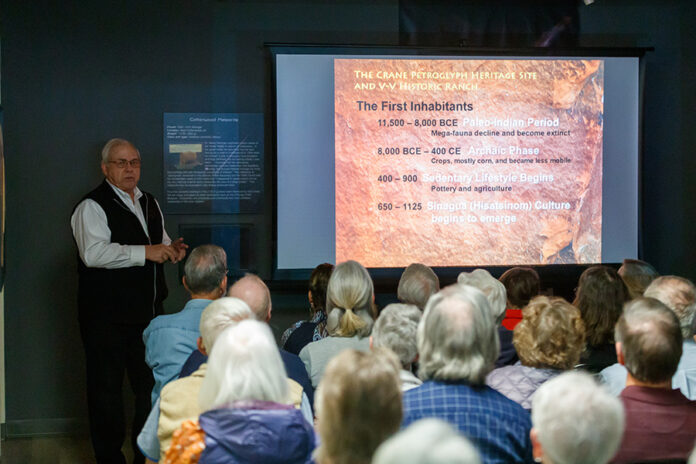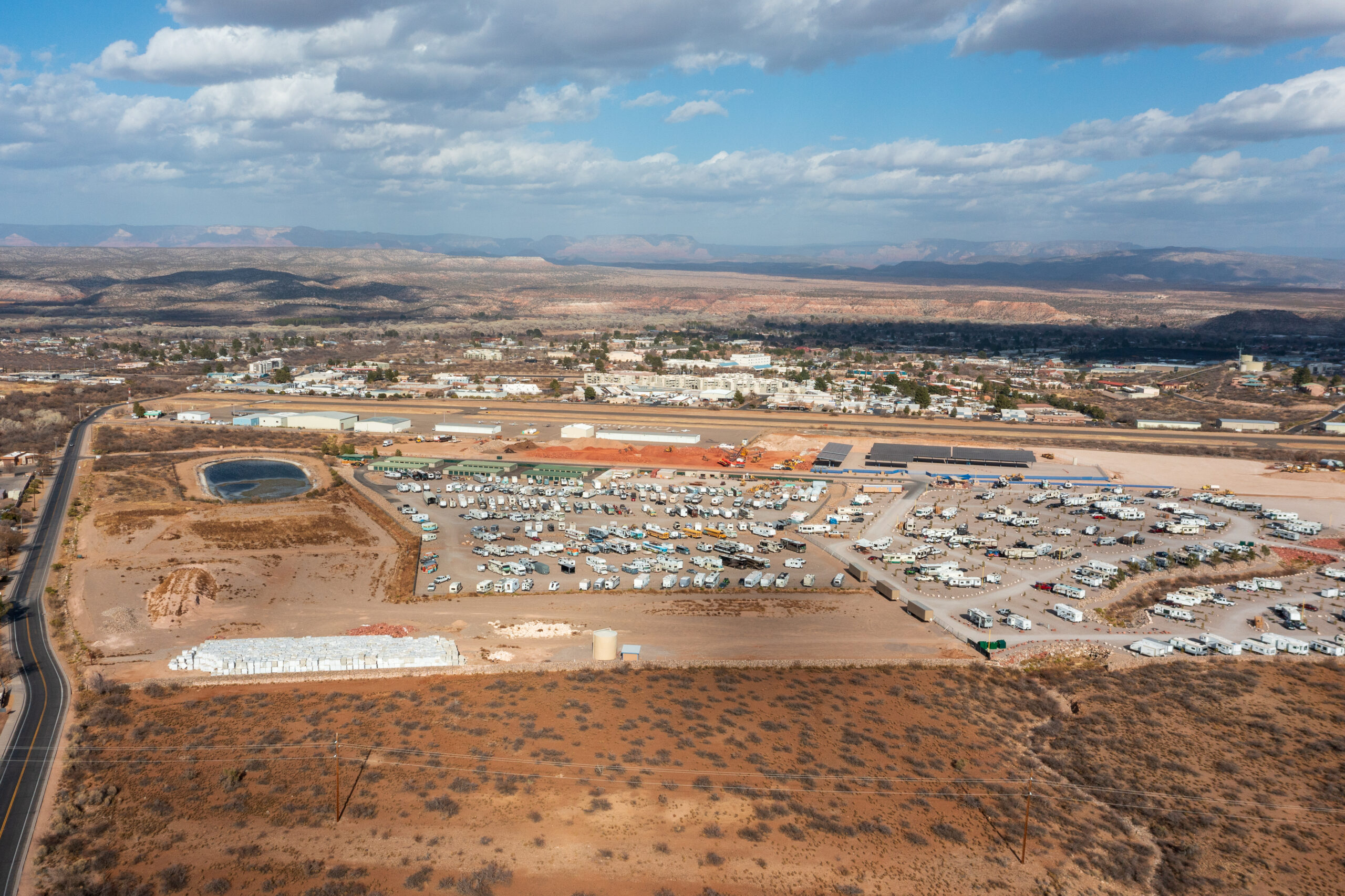The Verde Valley Archaeology Center hosted a discussion of Ken Zoll’s and Peter J. Pilles, Jr.’s book “The Crane Petroglyph Heritage Site and VV Historic Ranch” on Friday, Feb. 10.
Zoll explained that while the site has historically been known as the V-V Ranch, the Hopi argued that the name represented takeover of their lands, so the heritage site will be renamed Crane Petroglyph Heritage Site.
The Hopi also prefer the name Hisatsinom, meaning “the ancient ones,” rather than the Spanish term Sinagua, for their ancestors.
Zoll began working at the ranch as a docent in 2004. He conducted an archaeoastronomical survey of the site’s petroglyphs and eventually wrote a book titled “Sinagua Sunwatchers,” which examined the role of the petroglyphs as a solar calendar.
During the discussion, Zoll gave an overview of the first inhabitants of the Verde Valley, starting with the PaleoIndian period in approximately 11,500 BCE. This was followed by the archaic phase and the beginning of sedentary lifestyles and agriculture. The Sinagua, or Hisatsinom, people began to emerge between 650 to 1125 CE.
Settlement patterns changed over time. Dwellings became fewer and larger and were consolidated for protection. Groups of people that once roamed the entire region soon became concentrated around steady water sources.
Archaeological evidence indicates that the Yavapai people appeared around 1200 CE, although Yavapai elders claim they appeared around 2000 BCE. Their material culture consisted mostly of perishable objects such as woven baskets that have since deteriorated.
The Apache arrived in the region around 1450 CE and had a similar material culture to that the Yavapai. These were followed shortly thereafter by Spanish explorers in the 1500s and later by Anglo traders and trappers. These people came and went. It was not until the 1860s that American settlers began to make substantial intrusions upon the Apache and Yavapai home ranges, eventually forcing them onto reservations.
Zoll then discussed the first archaeologists in the region. Dr. Edgar A. Mearns, who was stationed at Fort Verde, was the first to record Montezuma’s Castle. Other notable archaeologists who worked in the area were Jesse Walter Fewkes, Albert H. Schroeder and Zoll’s co-author Peter J. Pilles, Jr.
The areas surrounding the petroglyph site were excavated in 2006 in randomly selected pits. The excavators discovered that the Sinagua-era surface lay about two feet below the modern surface.
The petroglyphs were created by removing rock varnish to reveal the color below. Rock varnish is a biochemical phenomenon that occurs in arid deserts with black or reddish-brown rocks. The petroglyphs at this site were created through direct percussion, by striking the rock with another rock.
Archaeologists can use four methods to determine how old the petroglyphs are: Their association with dateable artifacts, their style, their repatination and any superimposed designs.
The petroglyph site features images of anthropomorphs, zoomorphs, geometric abstracts, handprints and footprints, animal prints and clan symbols. Many images contain cupules, a representation of a cup-shaped depression that has religious connotations.
Zoll later found that the petroglyphs were a solar calendar, with a relationship between images in the equinox shadow line that could potentially be a birthing scene or a representation of the first day of spring.
The site also contains a small amount of historic graffiti made by the early Anglo settlers. The land was used as a ranch and was passed from owner to owner until the U.S. Forest Service acquired the ranch in 1994.
The book concludes with a selection of poems by one of the ranch’s previous owners, the cowboy poet Bruce Brockett, titled “Fenced Trails and Other Poems.”
For more information visit verdevalleyarchaeology.org



